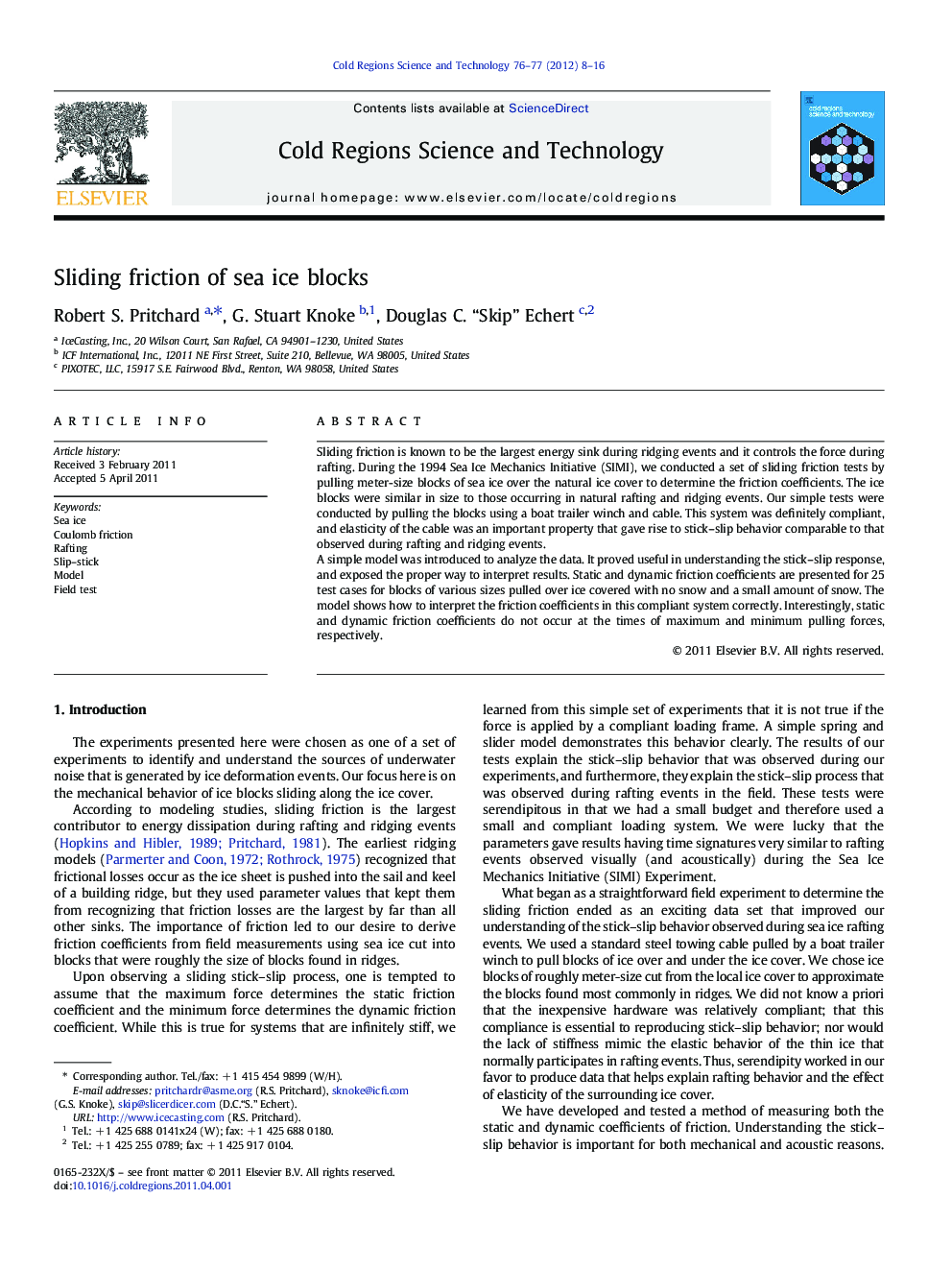| Article ID | Journal | Published Year | Pages | File Type |
|---|---|---|---|---|
| 4675967 | Cold Regions Science and Technology | 2012 | 9 Pages |
Sliding friction is known to be the largest energy sink during ridging events and it controls the force during rafting. During the 1994 Sea Ice Mechanics Initiative (SIMI), we conducted a set of sliding friction tests by pulling meter-size blocks of sea ice over the natural ice cover to determine the friction coefficients. The ice blocks were similar in size to those occurring in natural rafting and ridging events. Our simple tests were conducted by pulling the blocks using a boat trailer winch and cable. This system was definitely compliant, and elasticity of the cable was an important property that gave rise to stick–slip behavior comparable to that observed during rafting and ridging events.A simple model was introduced to analyze the data. It proved useful in understanding the stick–slip response, and exposed the proper way to interpret results. Static and dynamic friction coefficients are presented for 25 test cases for blocks of various sizes pulled over ice covered with no snow and a small amount of snow. The model shows how to interpret the friction coefficients in this compliant system correctly. Interestingly, static and dynamic friction coefficients do not occur at the times of maximum and minimum pulling forces, respectively.
Research highlights► Coulomb friction coefficients determined for ice blocks sliding on ice. ► Elastic cable used to tow ice blocks on flat ice to simulate rafting. ► Static and dynamic friction coefficients did not occur at maximum and minimum loads. ► A simple model of spring and slider was used to describe the behavior. ► Phase space plots of pulling force versus its time derivative show results clearly.
